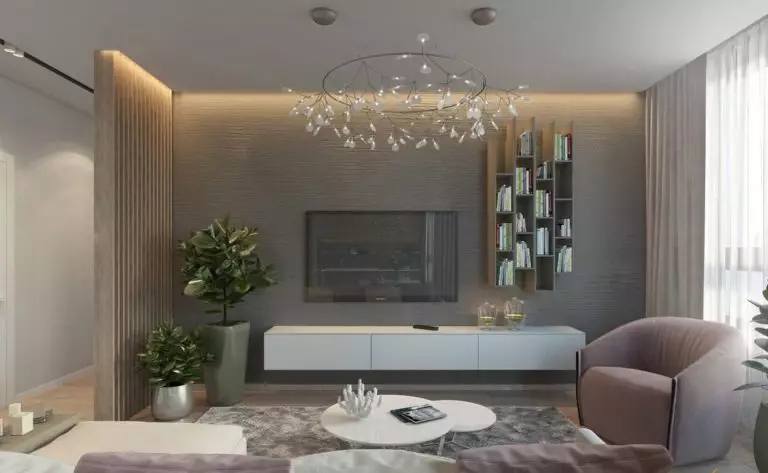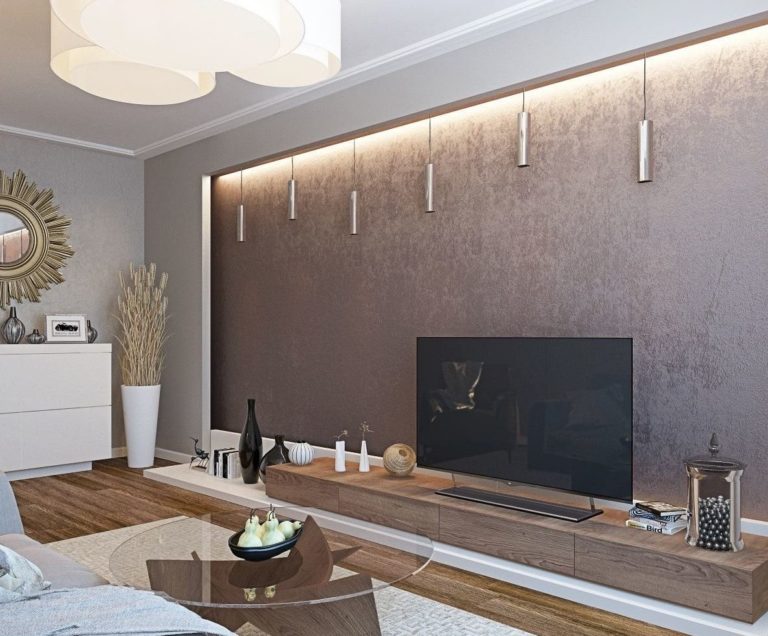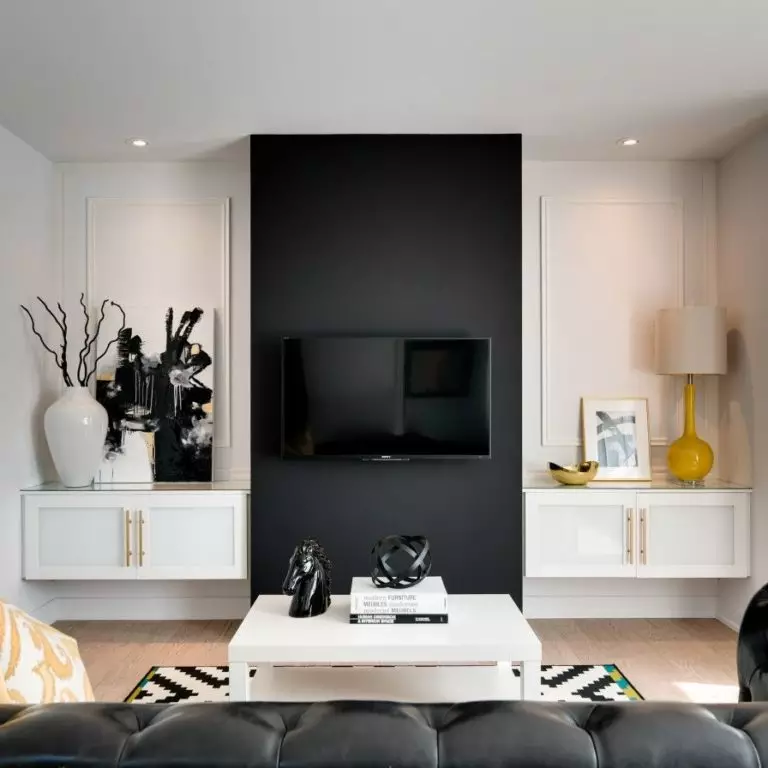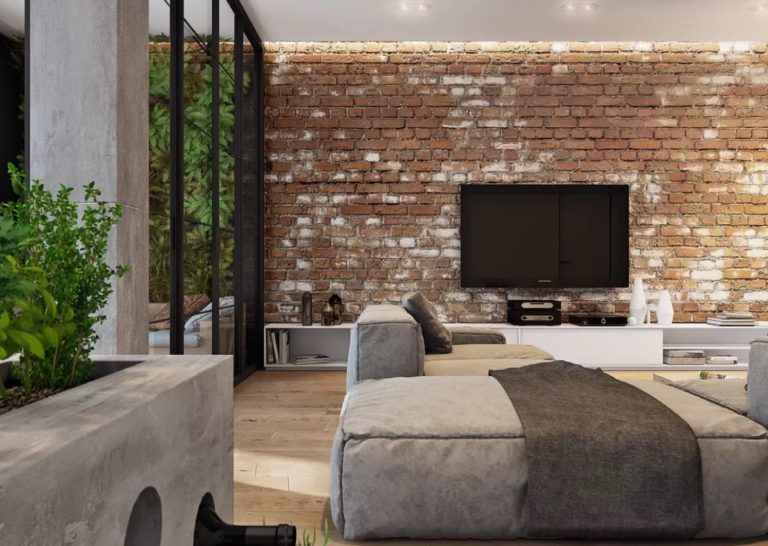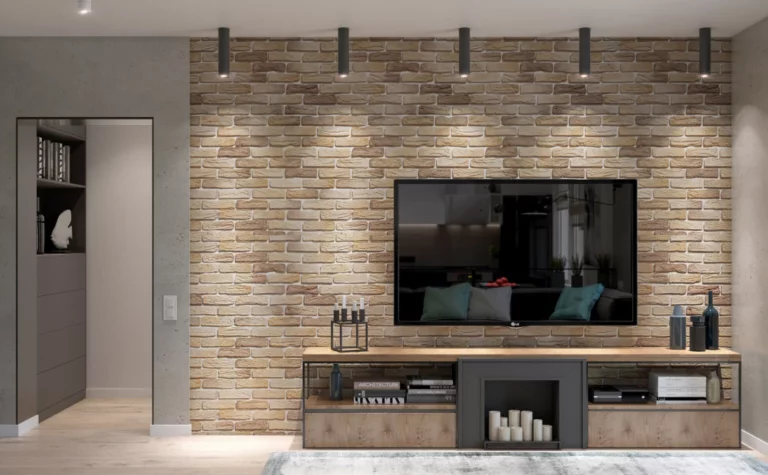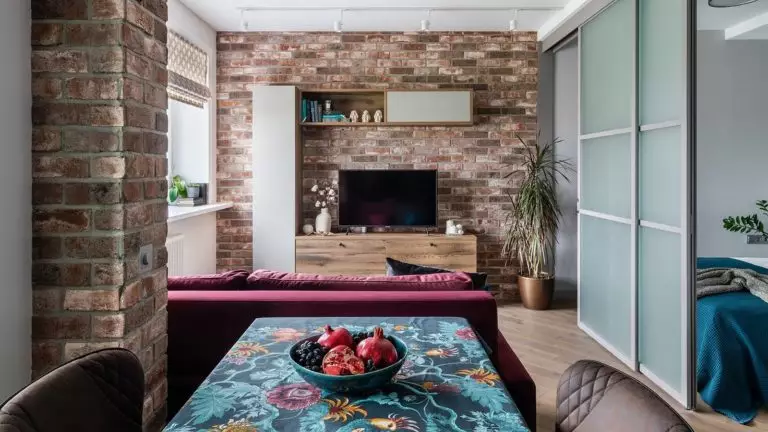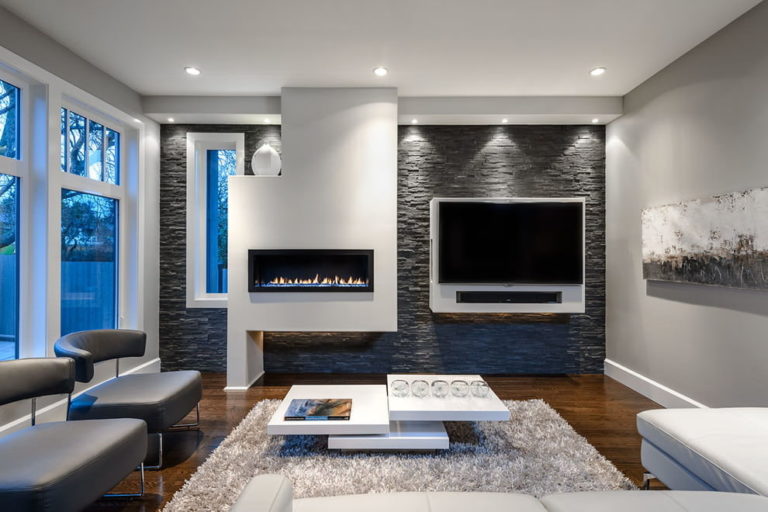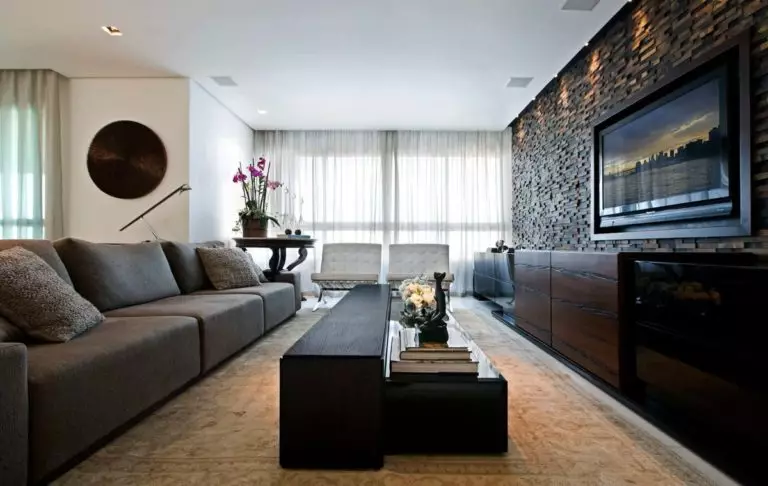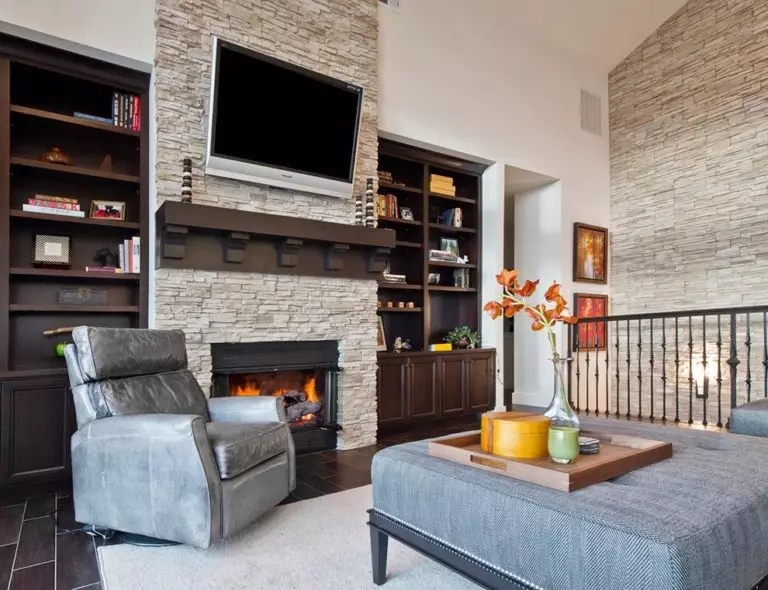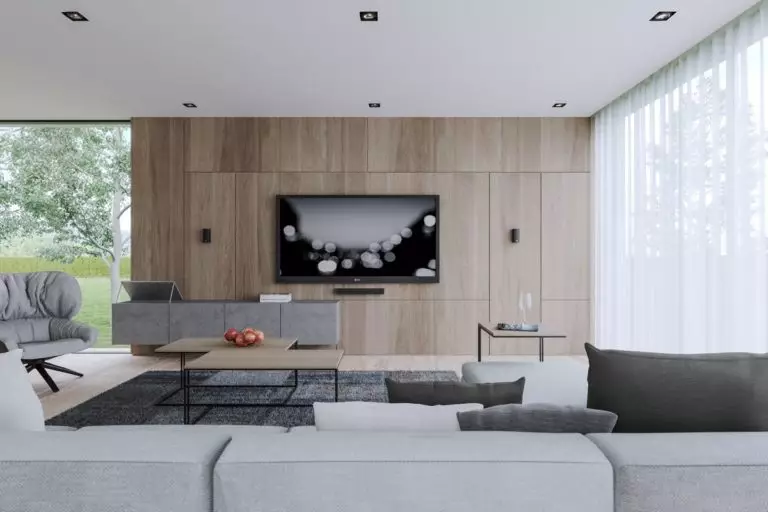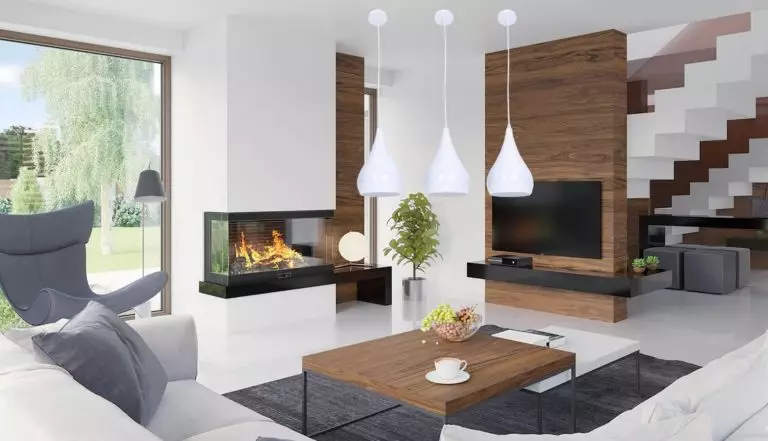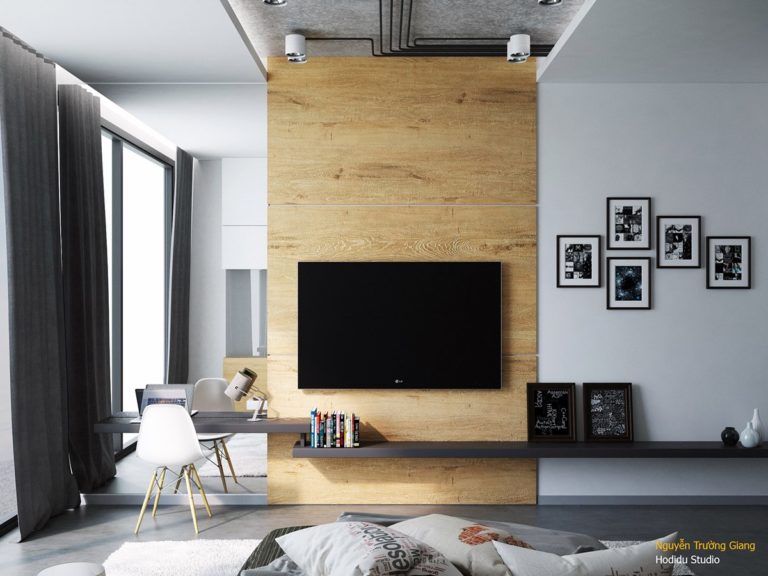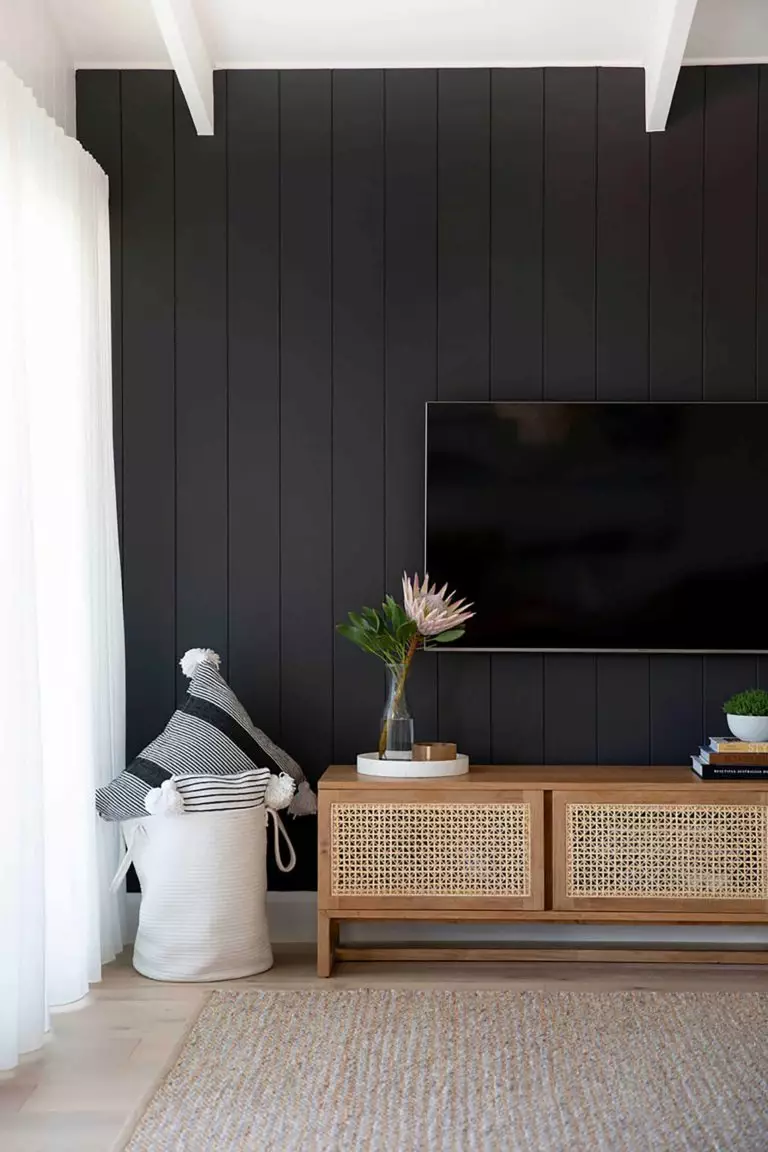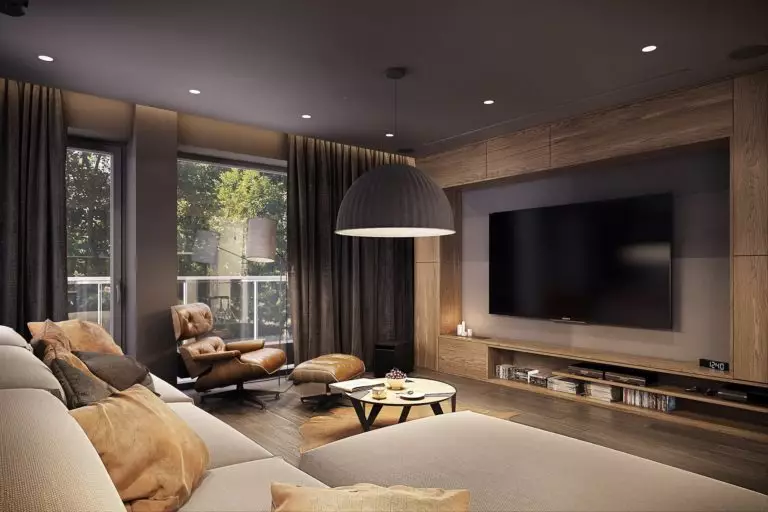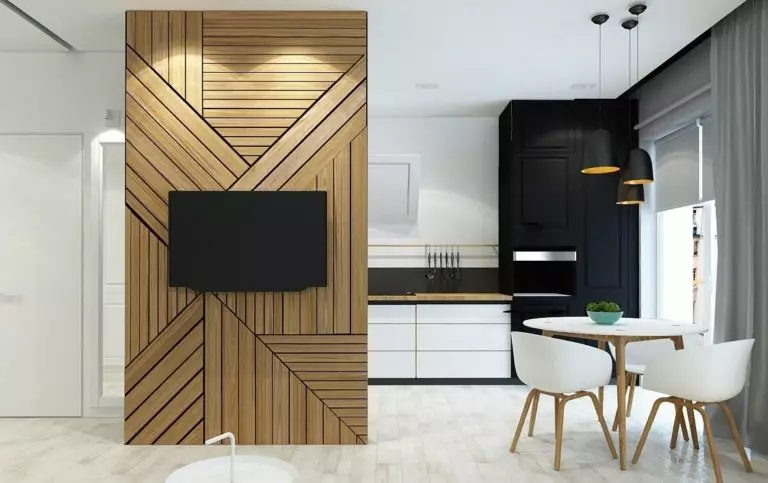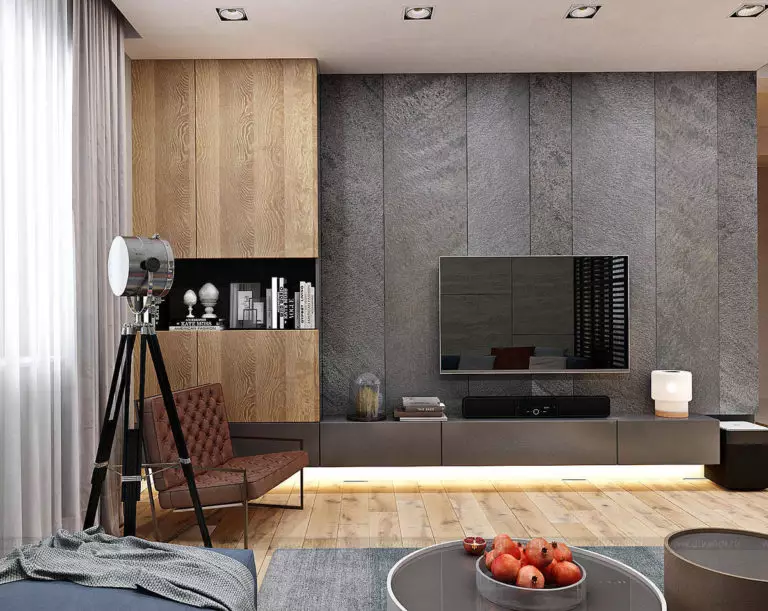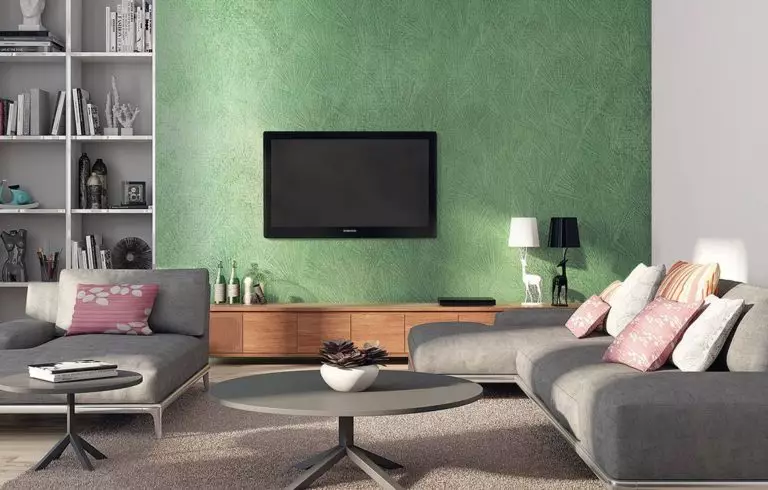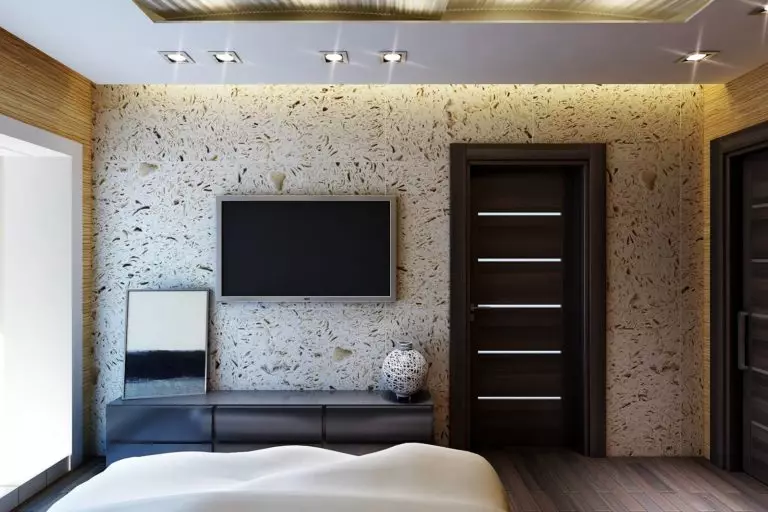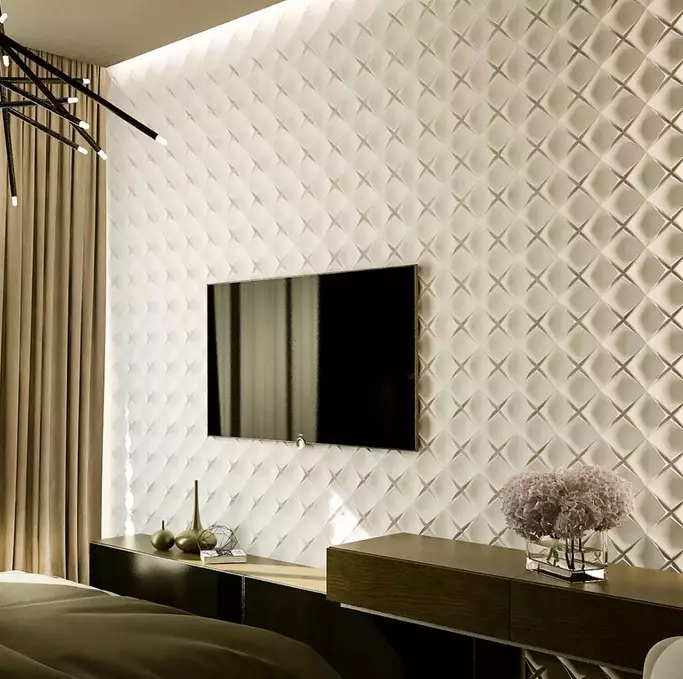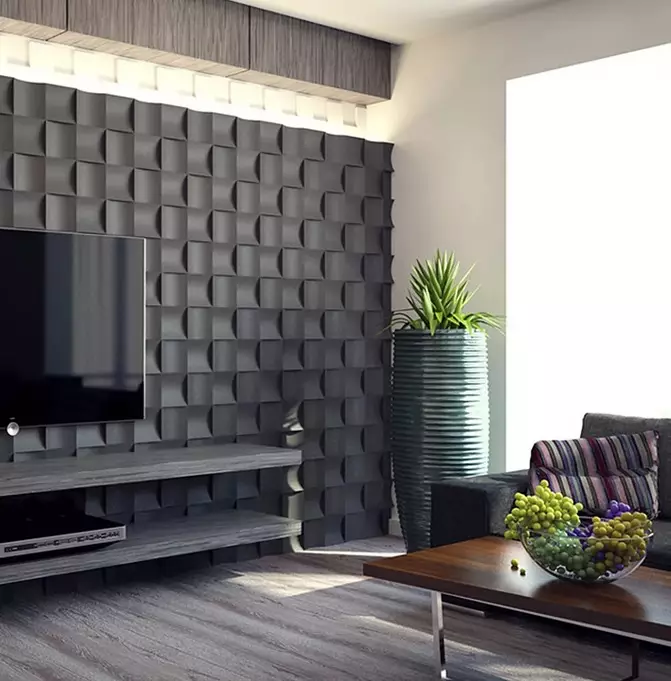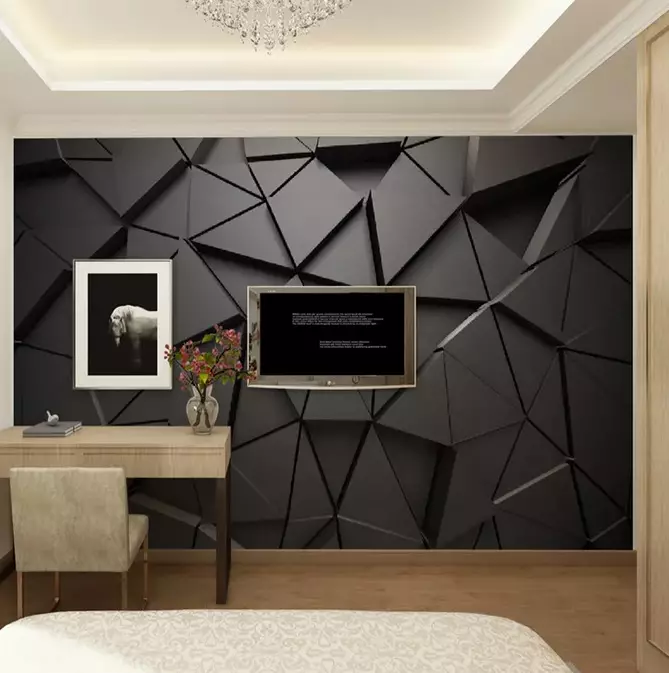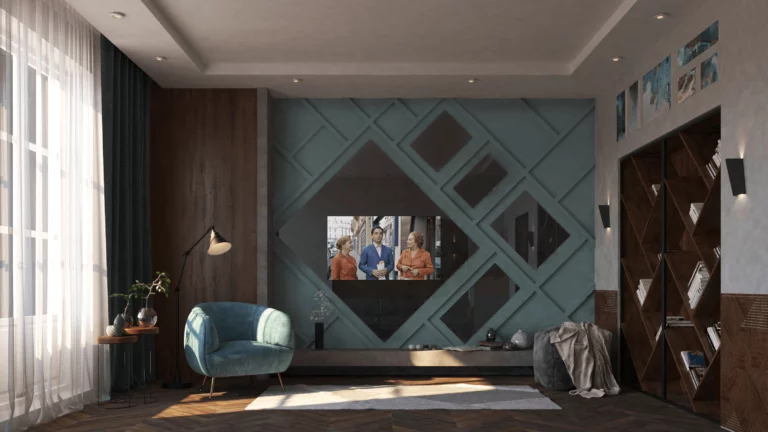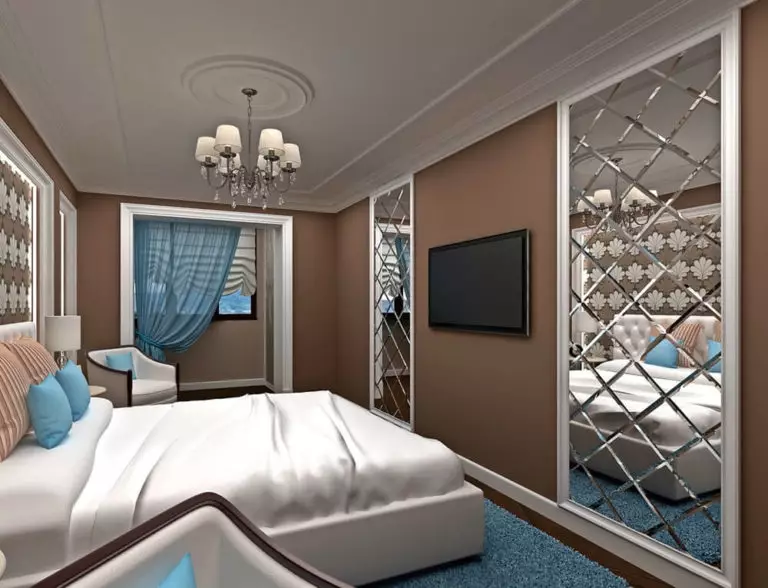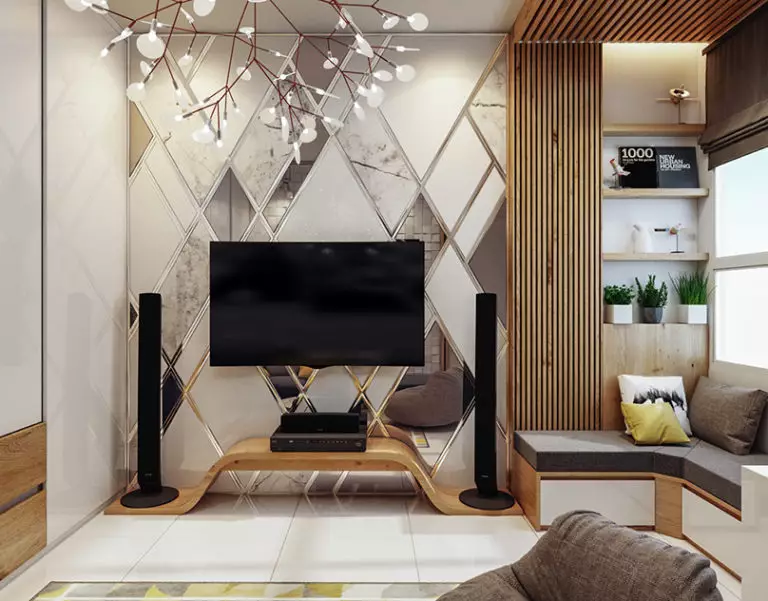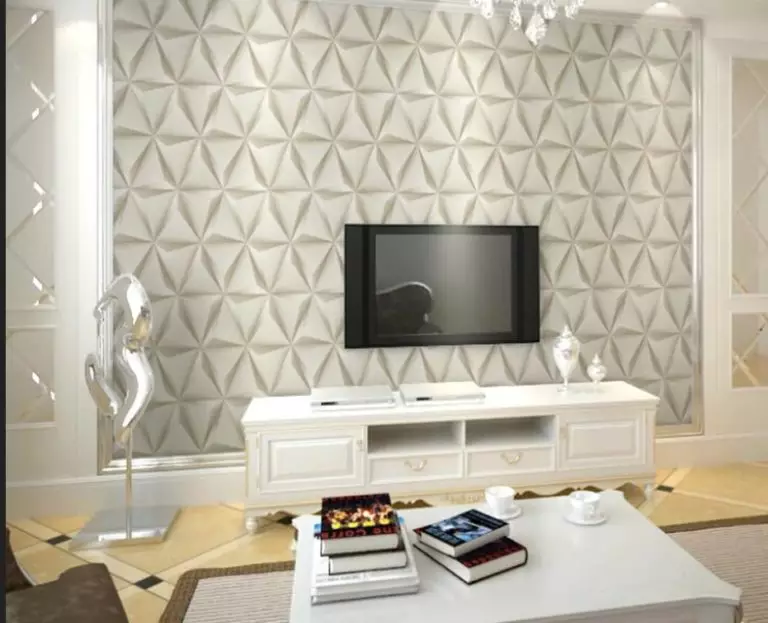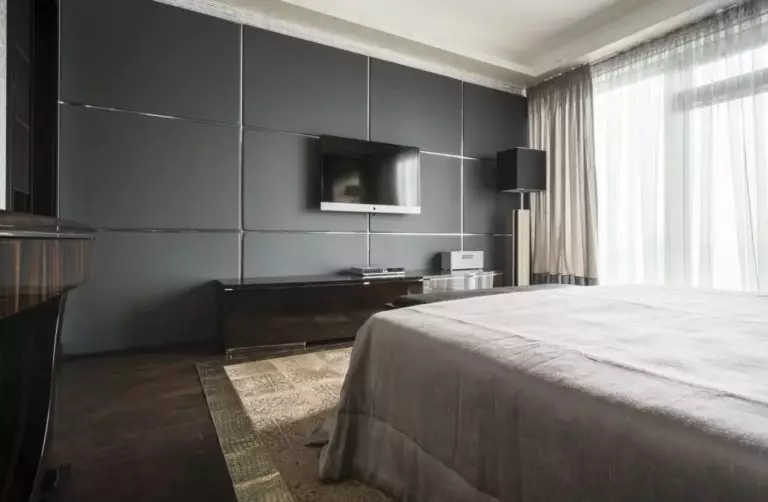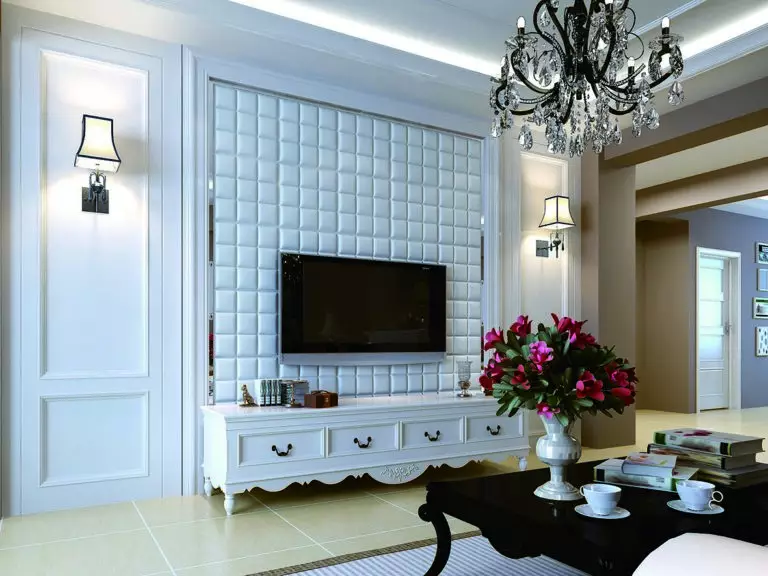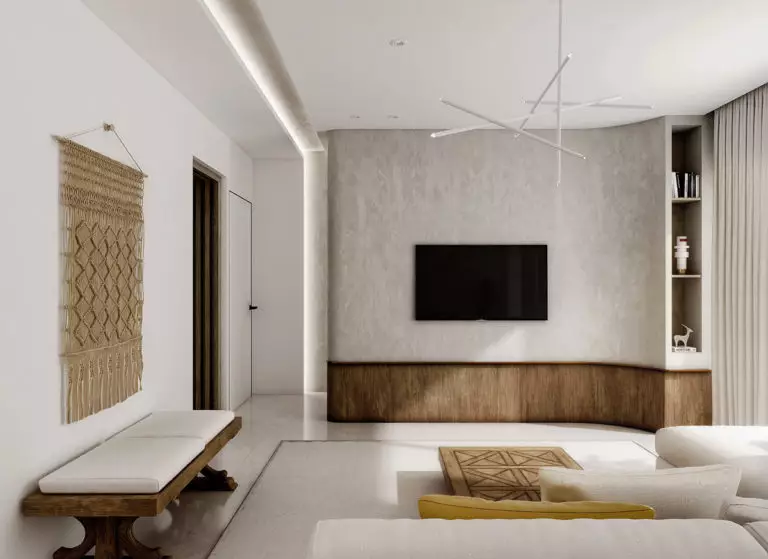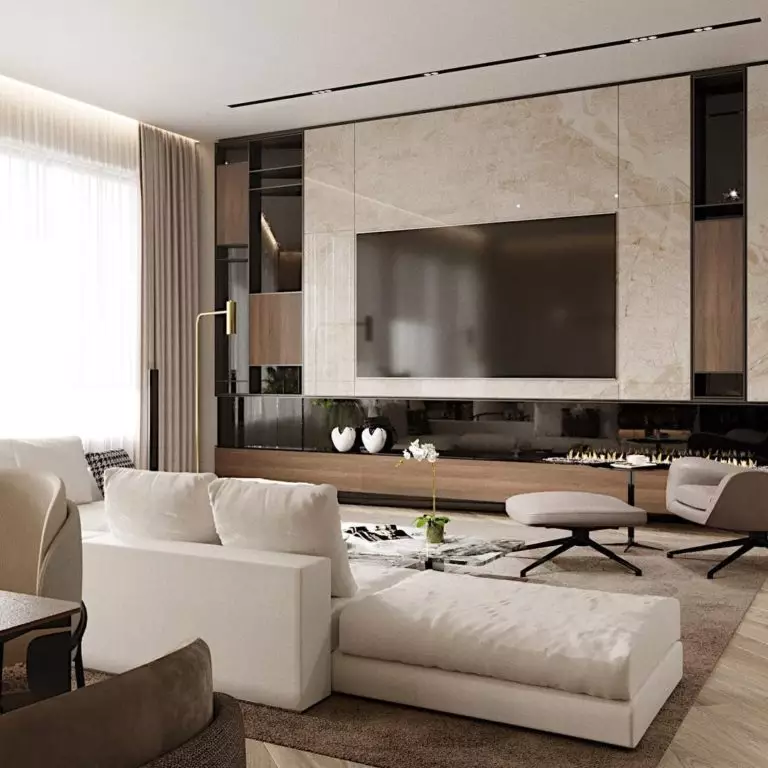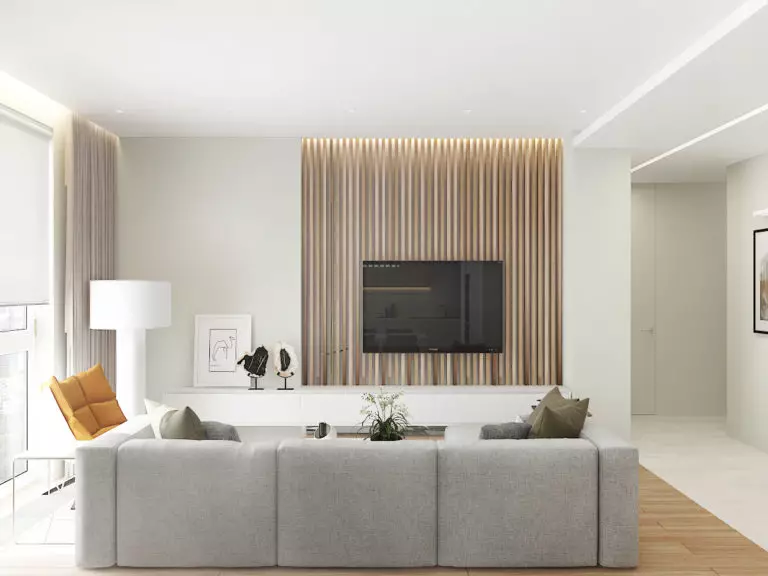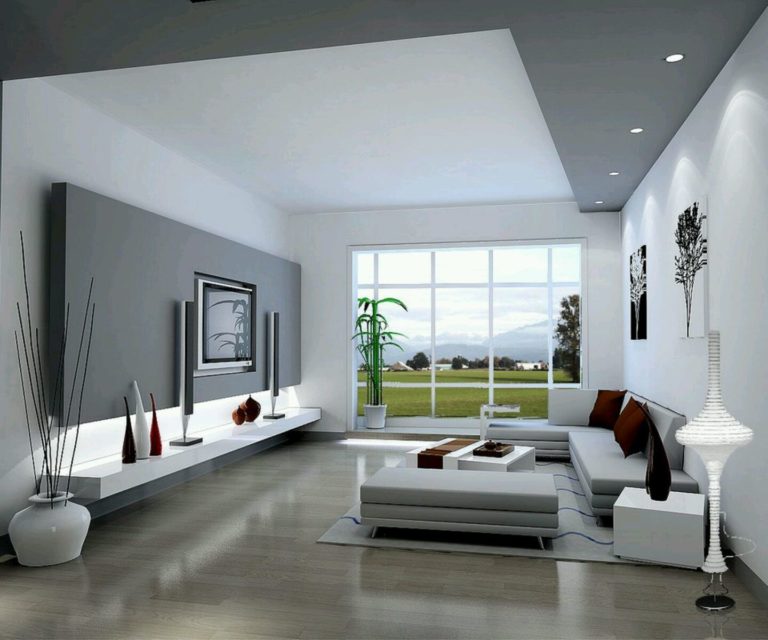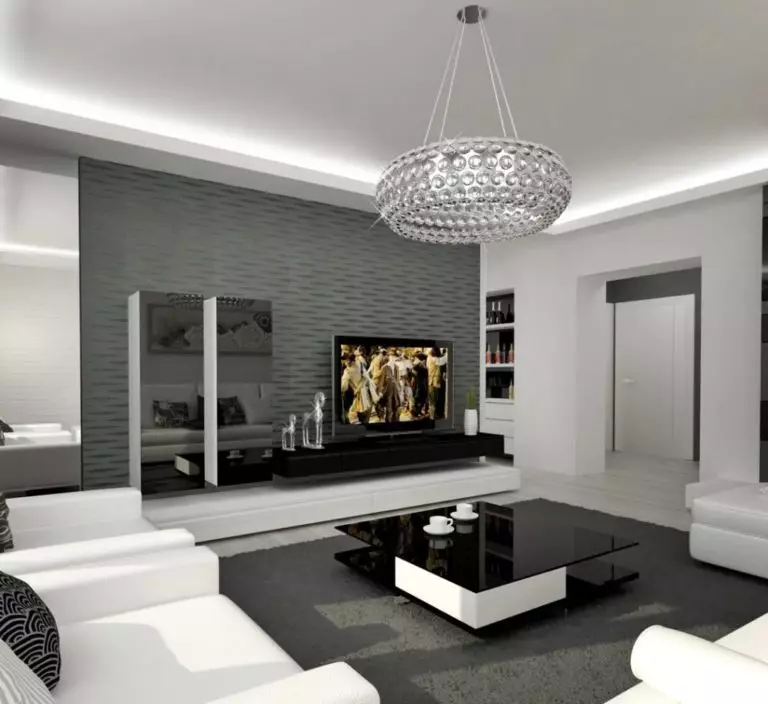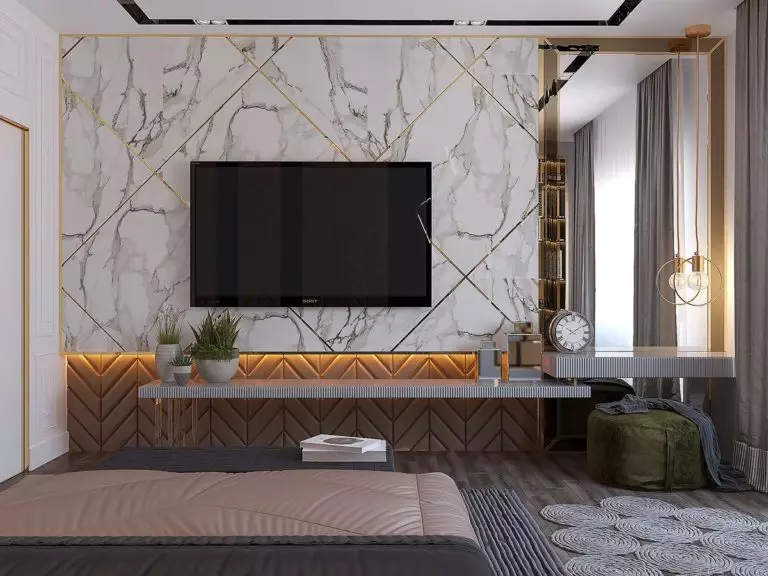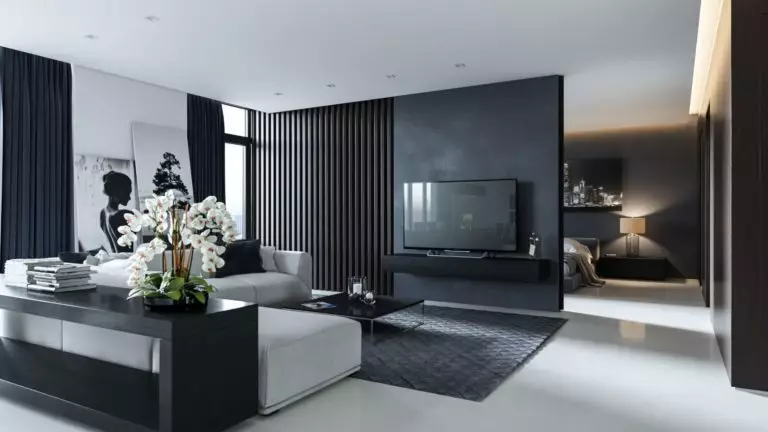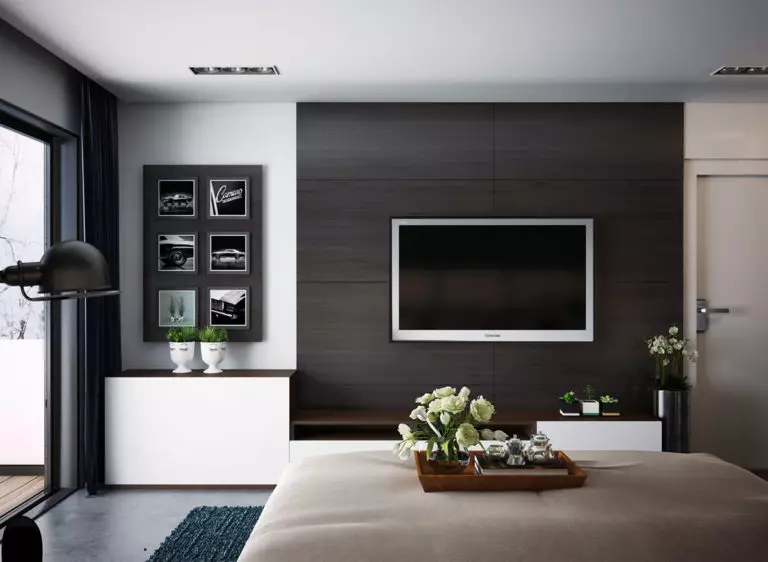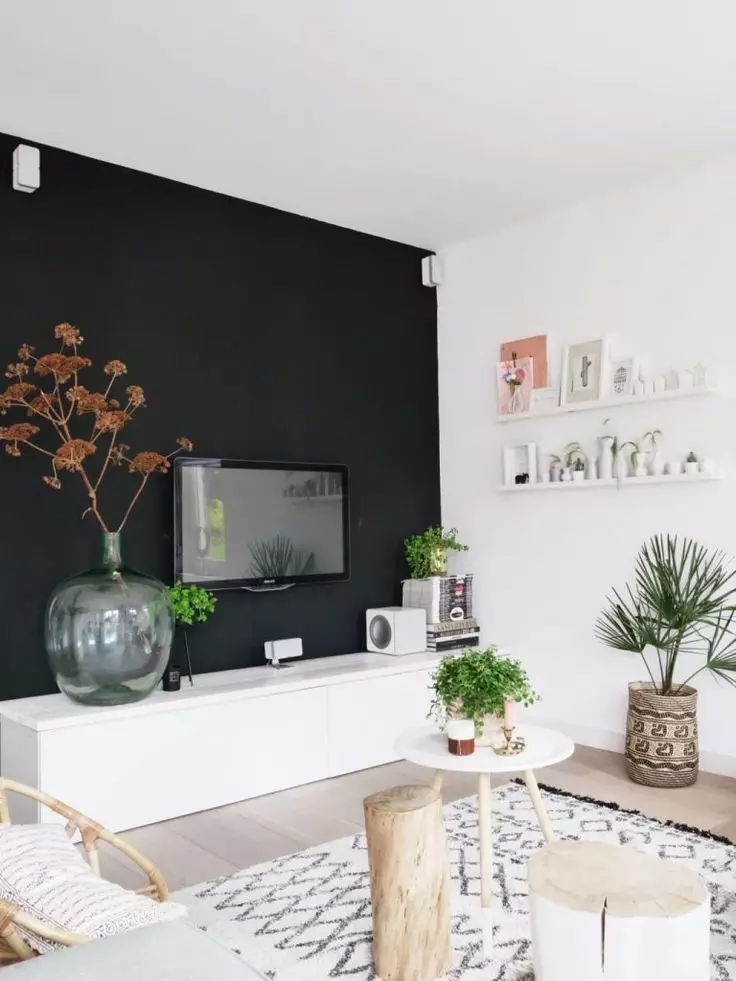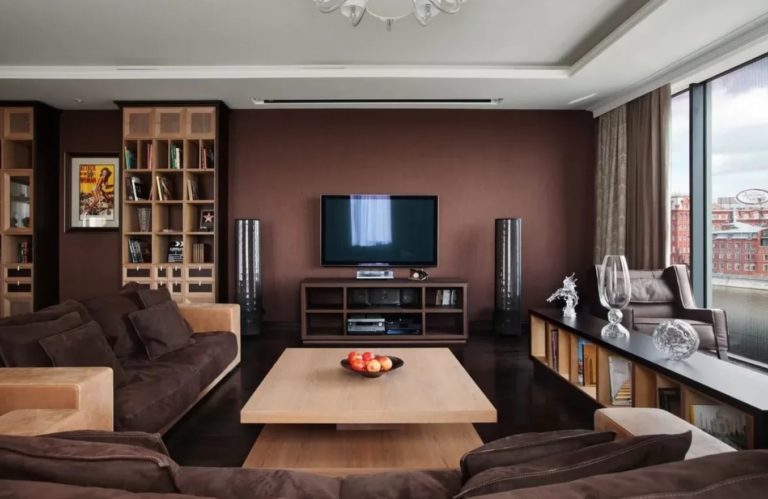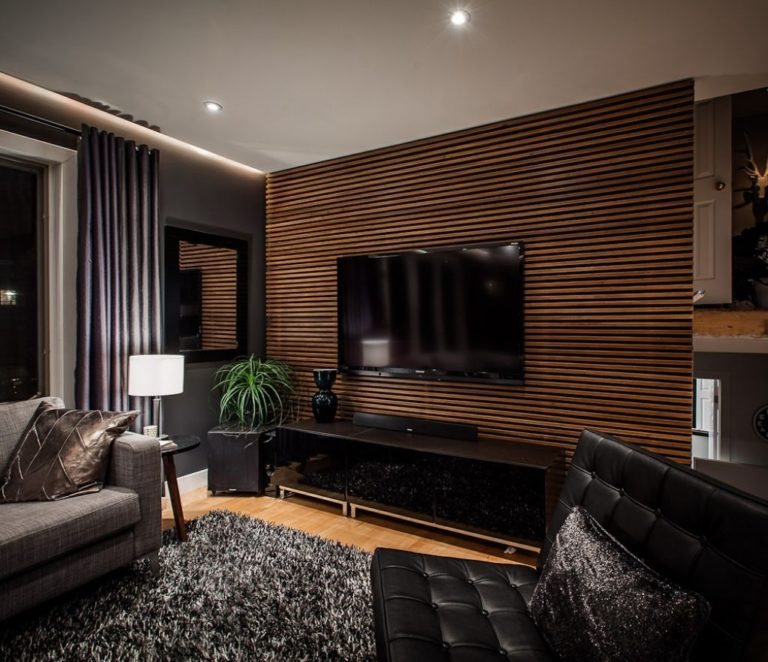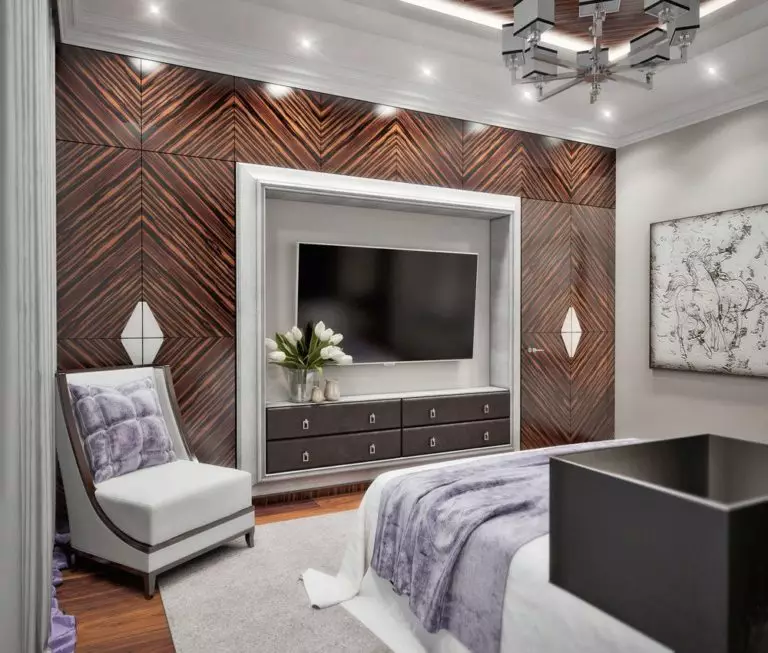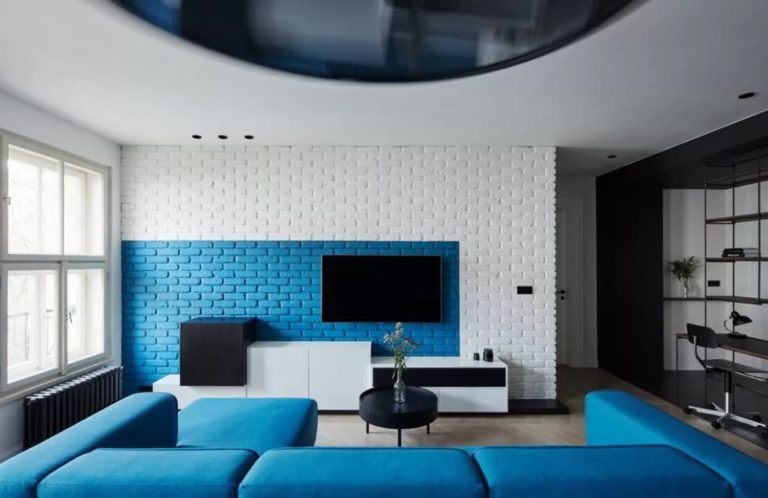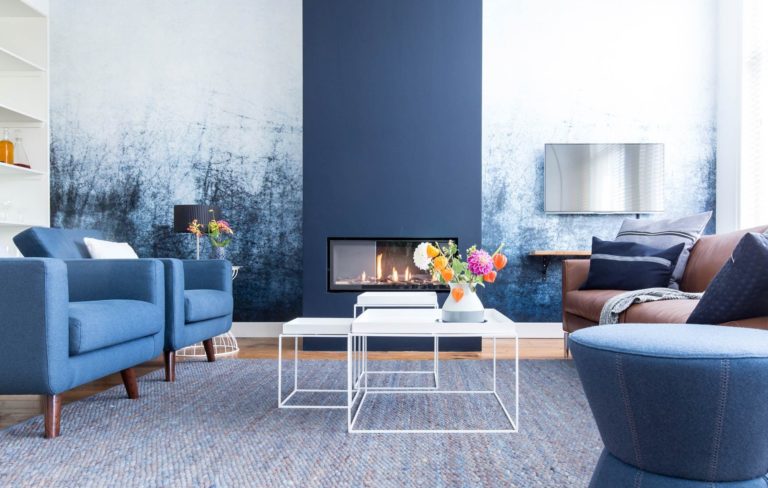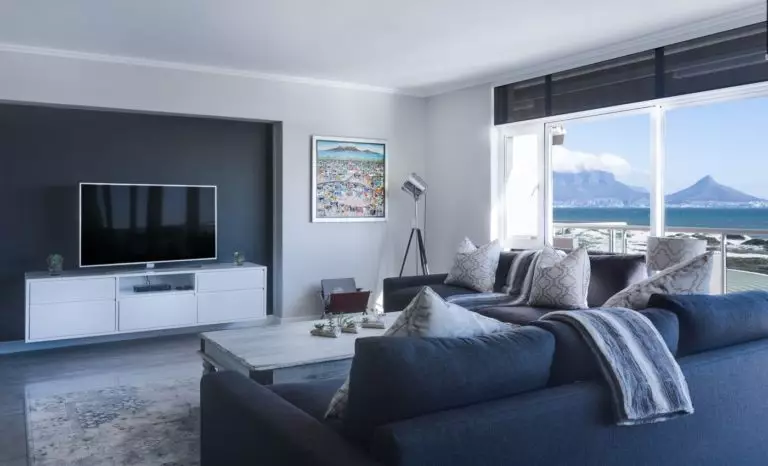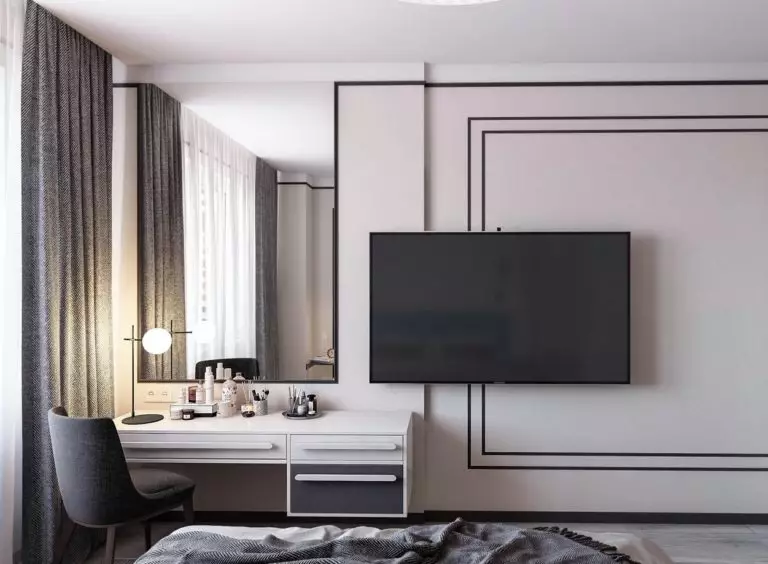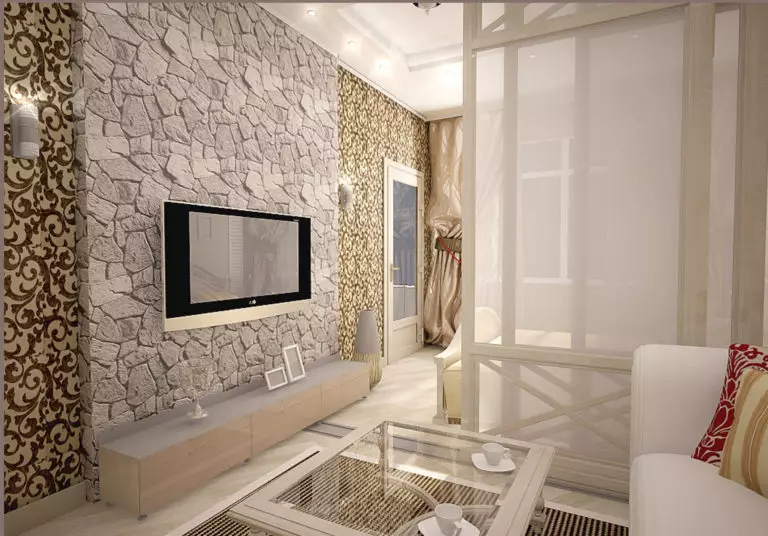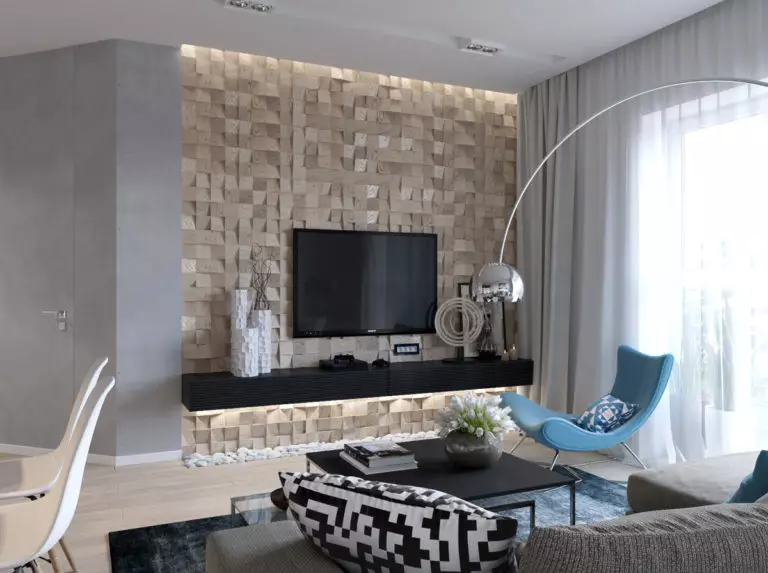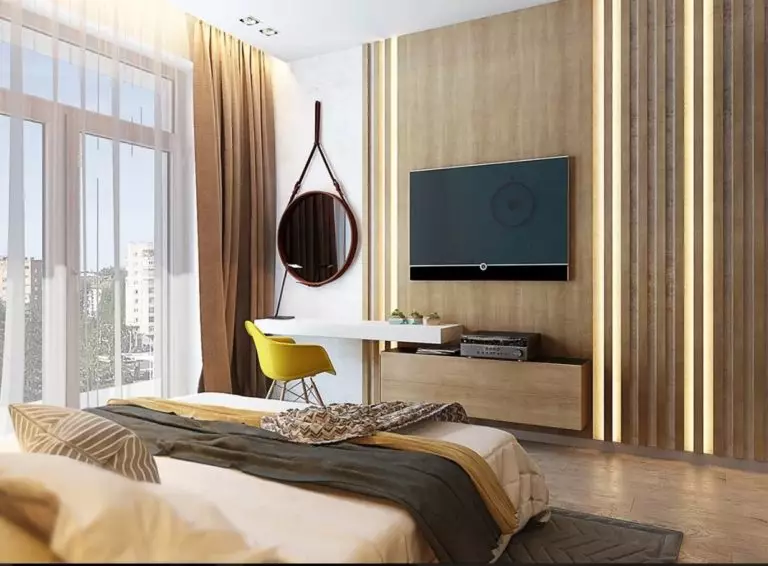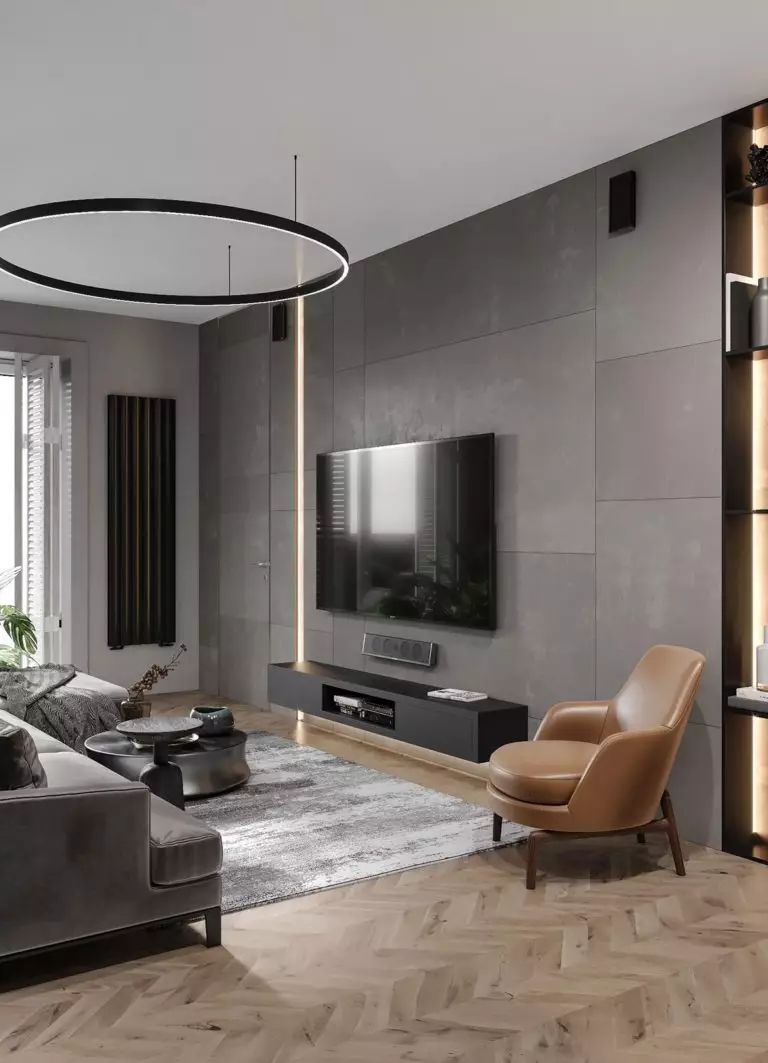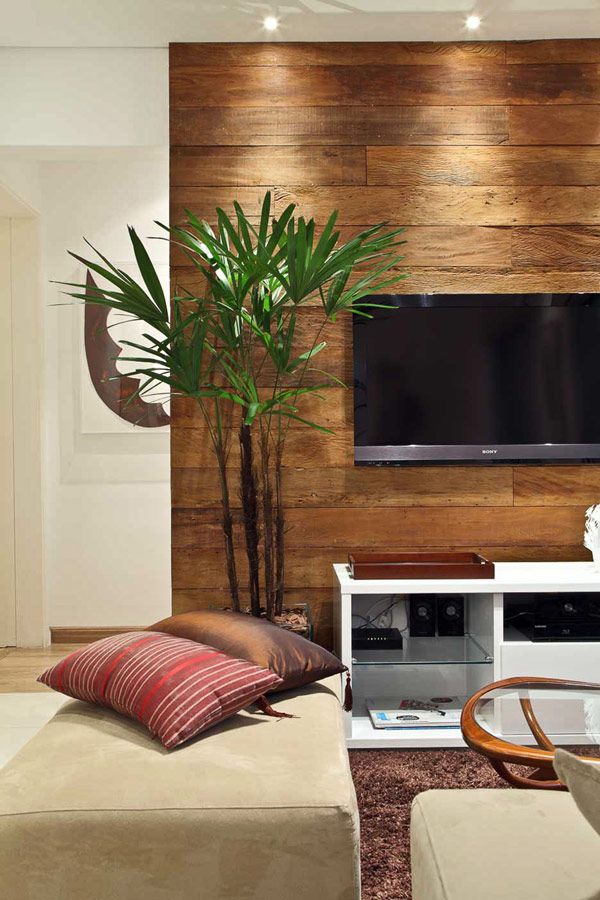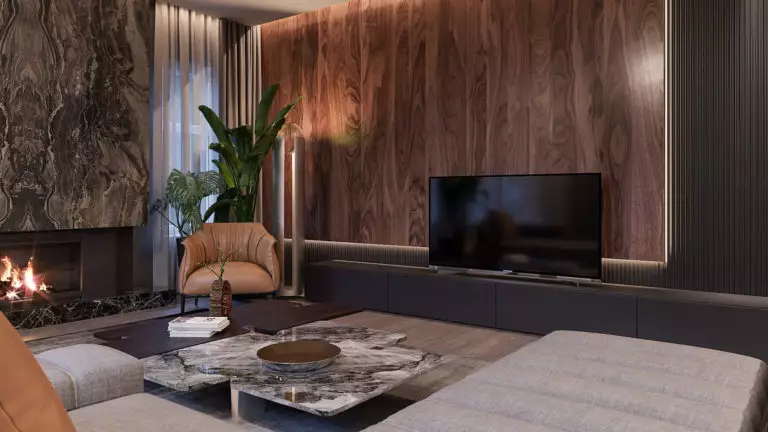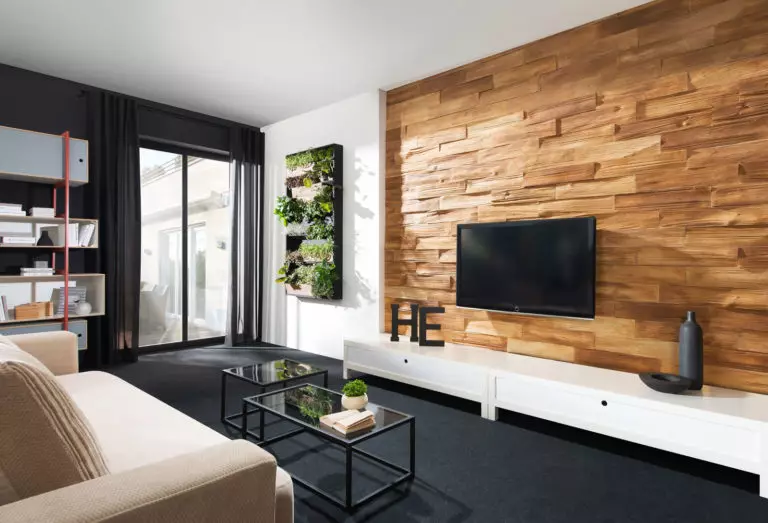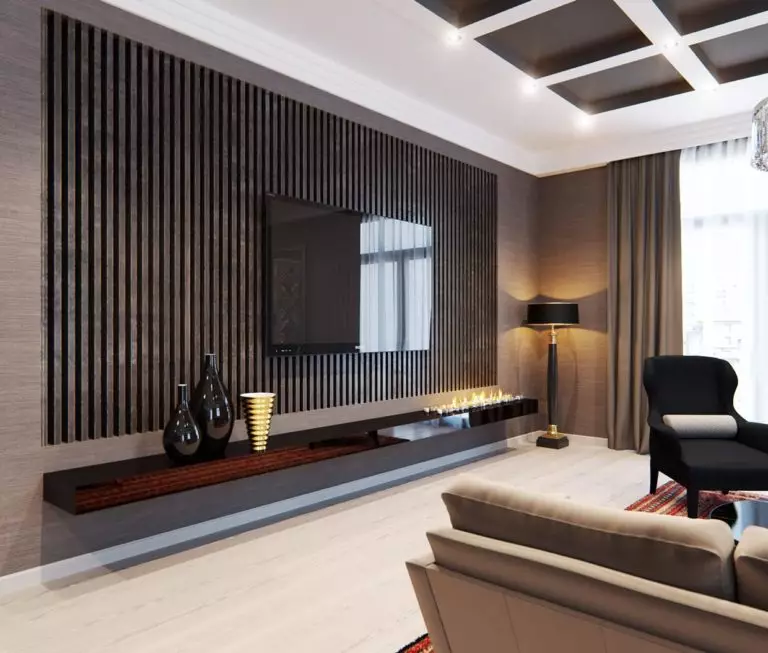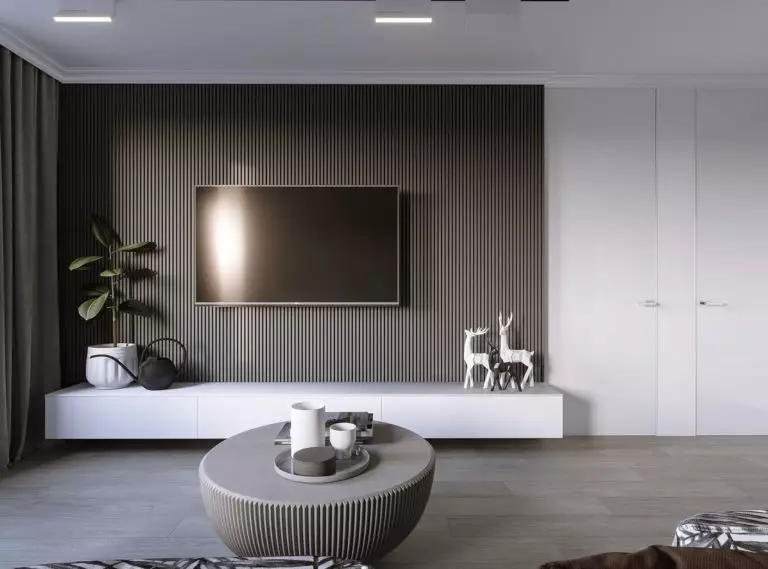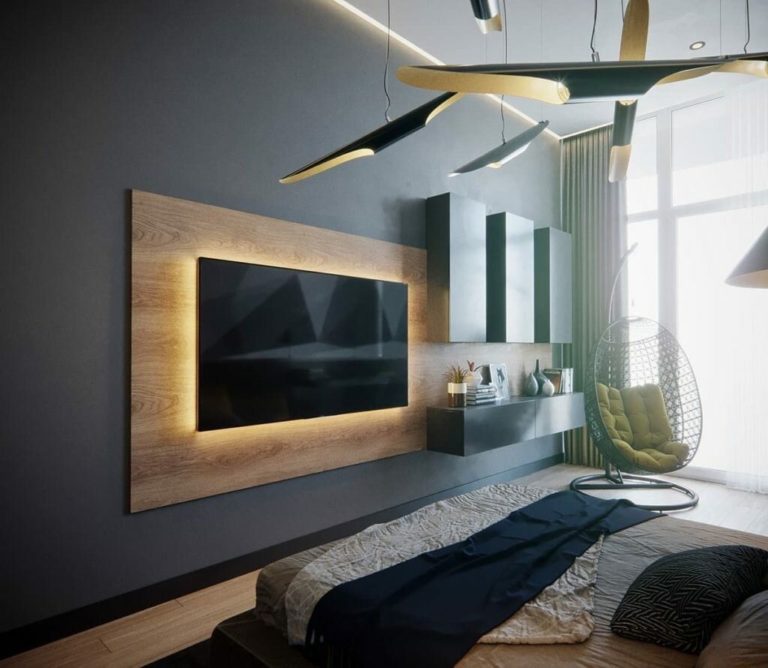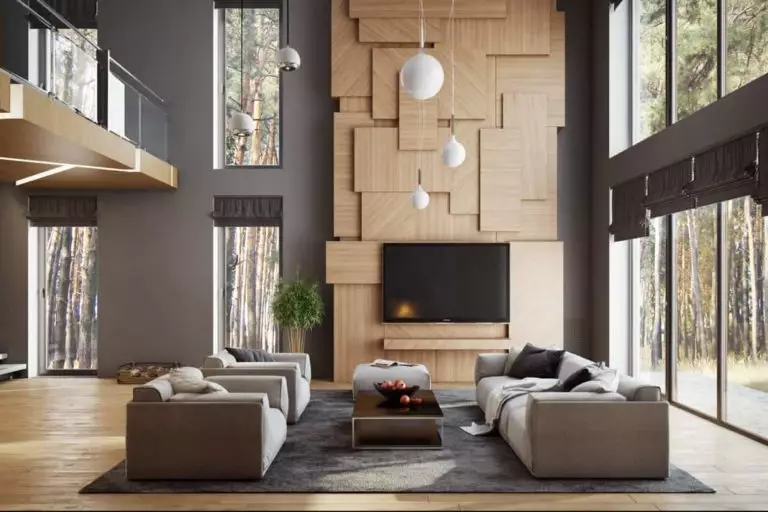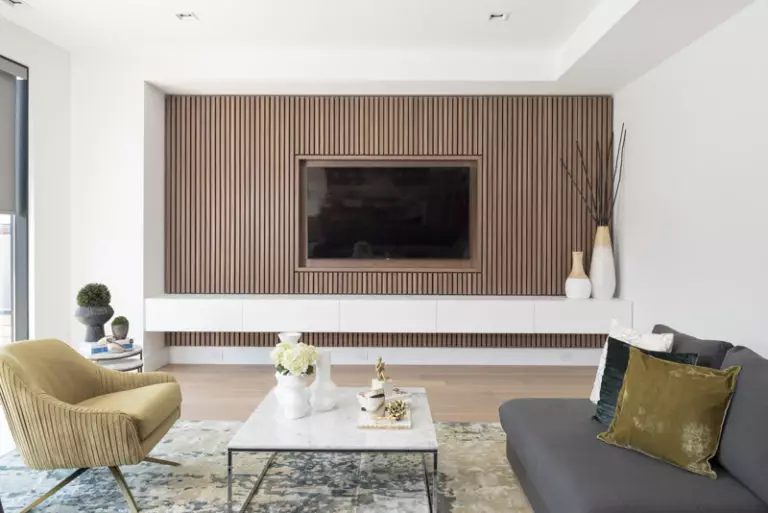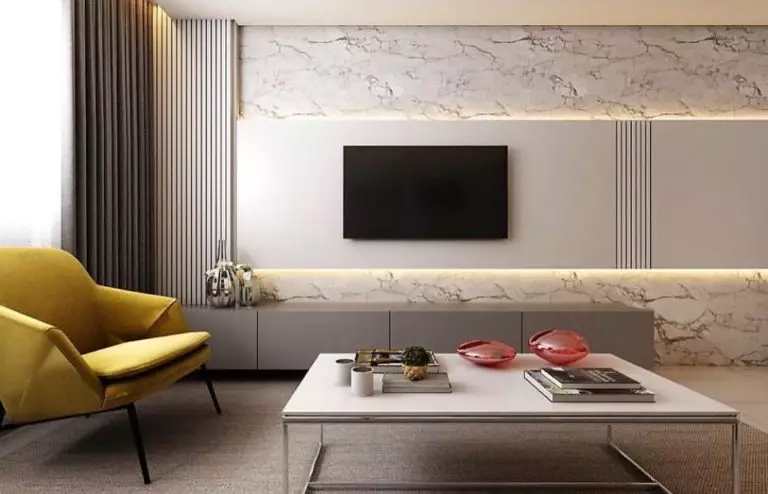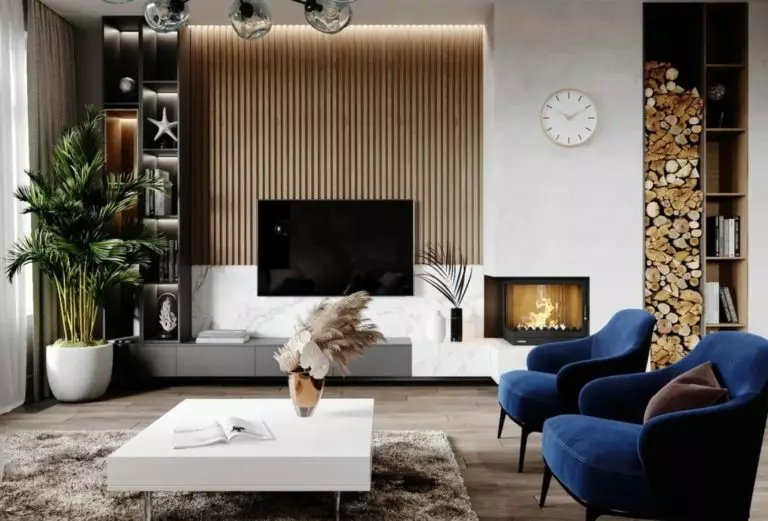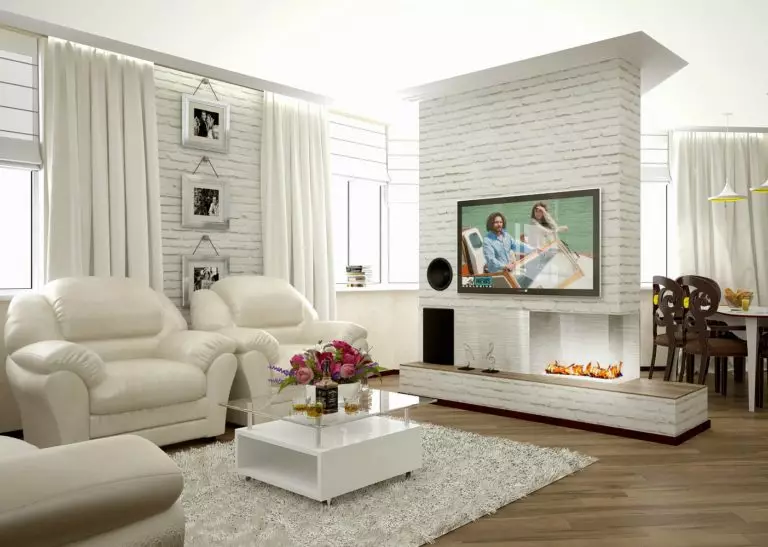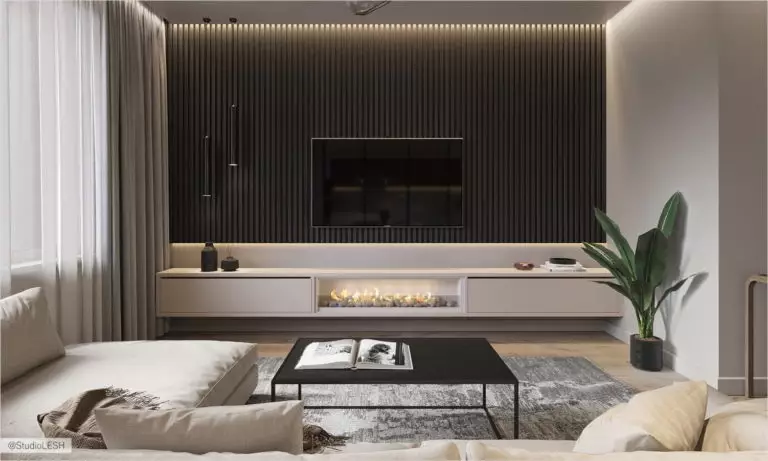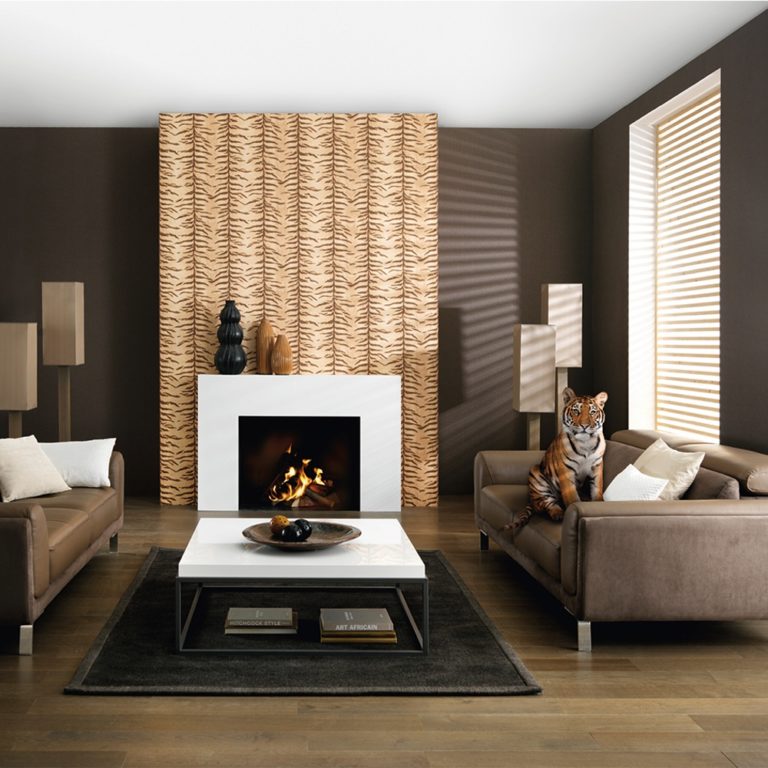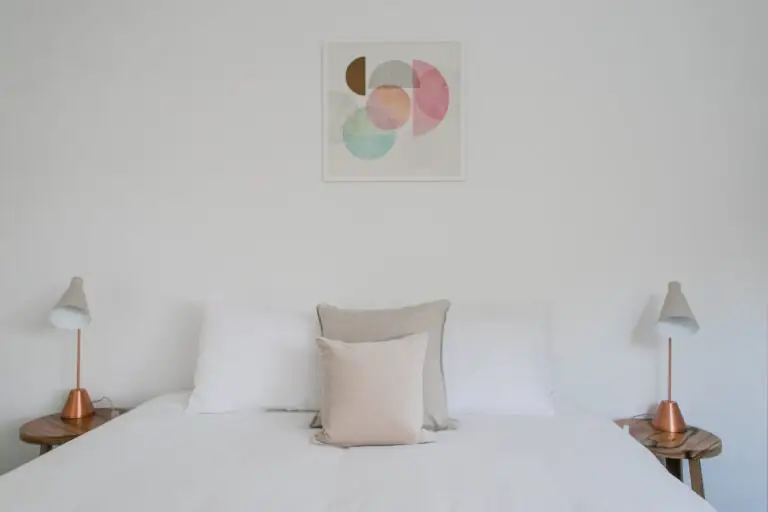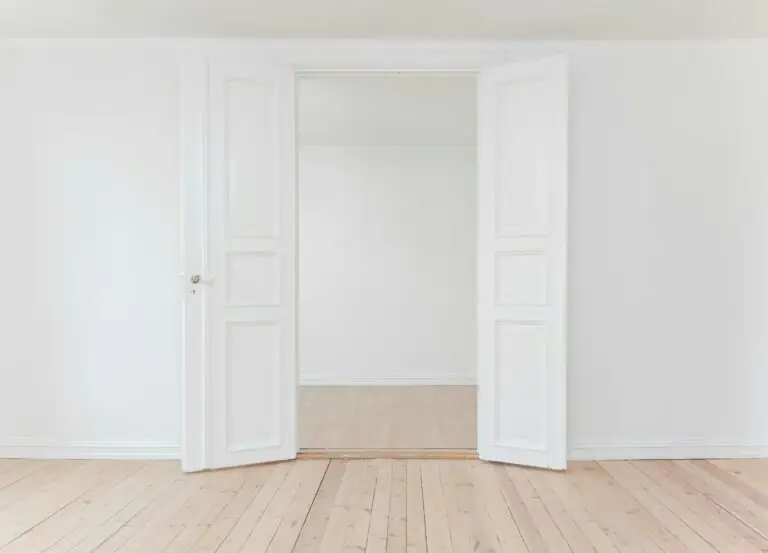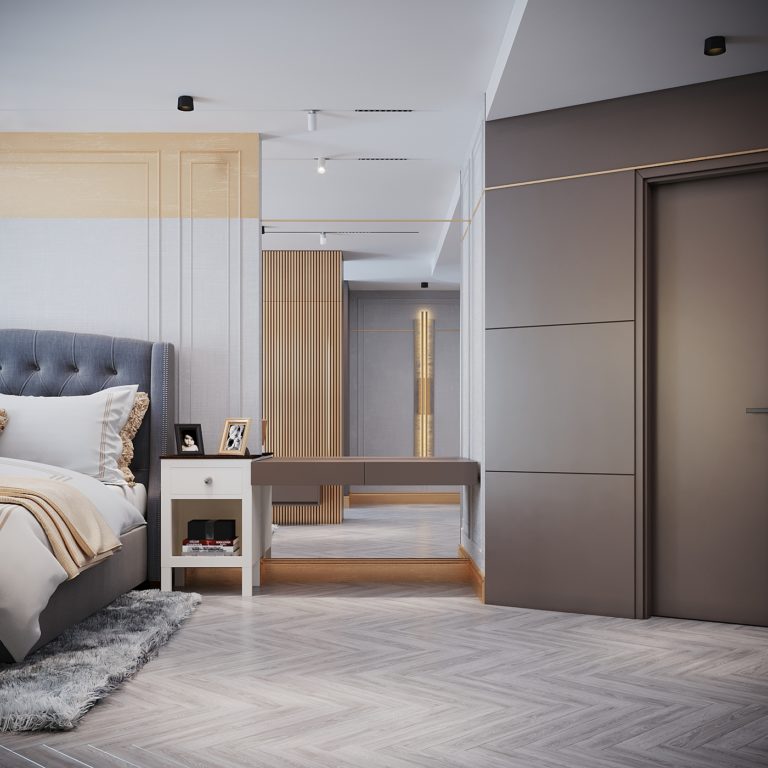TV accent wall: materials, colors, and design ideas
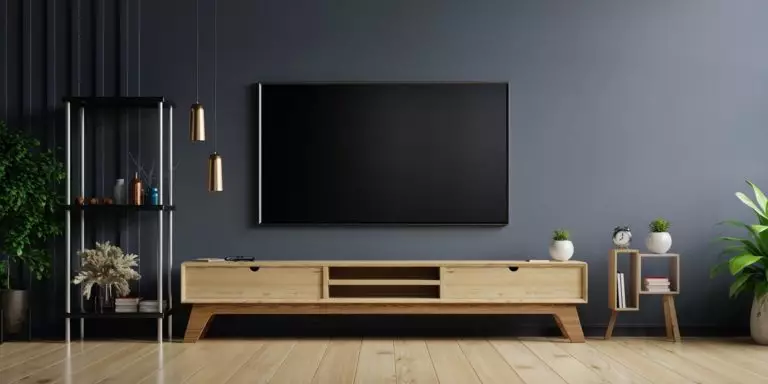
Television has remained our focus for decades. Of course, smartphones, tablets, and laptops have noticeably shifted his position, but as a way to bring the whole family together, he still works one hundred percent. And since electronics have long been an integral part of interiors, the task of organically fitting them into the interior remains relevant for the owners of houses and apartments and designers.
Previously, televisions were installed on TV stands and specially designed wall modules for the living room. Both of these options are in demand today, but ergonomic considerations dictate the need for more compact solutions. That is why the installation of TV on the wall over time became a priority option – and at the same time, the designers had to start working on ideas for the harmonious design of the area around it. Today, these techniques continue to evolve, and accent walls become an object of admiration and a way to make the living room or bedroom exclusive.
Of course, you can leave the wall behind the TV and around it “empty” – today, when militant minimalism is more trendy than ever, there is nothing terrible about it. However, if you feel something is missing in the room’s decoration, then the accent wall behind the TV will be an excellent opportunity to add this “something” without cluttering the space with unnecessary things. If you are interested, it is worth talking about materials and colors for this type of surface.
Accent wall behind the TV: creating visual attraction
When decorating the accent wall against which the TV is located, you must consider one crucial nuance: nothing should interfere with enjoying your favorite movies, news, or evening shows. That is why it is worth giving up extravagant and bright details or materials with an overly voluminous texture. However, this does not mean that your options are becoming limited: today, designers offer many ideas for what you can use to create an accent.
Paint, decorative plaster
A smooth and highlighted wall is the easiest way to create an expressive accent. You do not need to use any additional decor. Even without this, the painted vertical surface will attract attention, which makes the paint an excellent material for interiors in current styles – including minimalism, Scandinavian, and Japanese. The only point is the correct choice of color, but we will talk about this below.
An equally suitable option is decorative plaster, which noticeably revives the surface due to its more expressive texture, even if you prefer light or pastel monochrome. The choice of decorative plaster is limited only by your imagination and the options available in your city.
Brick
A TV set on a brick accent wall deserves to be included in the encyclopedia of interior classics – of course, if there is one. The fact is that today such a solution is found so often that many consider it to be something quite commonplace, and an accent wall made of rough red or neat and white-painted brick is seen more and more often.
However, if you would also like to decorate the TV wall similarly but still do not mind adding originality, try simply laying the brick in a non-standard way, such as replacing the brick bond type.
Stone
The decorative stone for the wall cladding behind the TV has already demonstrated its organicity in decoration in various styles – from Mediterranean to Art Nouveau and Scandinavian. Depending on which design direction is closer to you, you can try the following solutions:
If you do not have enough funds for natural stone slabs, then you can easily replace them with artificial stone or large-format porcelain stoneware – the latest solution is on the list of hot trends today.
Wood or its imitation
Suppose the interior of your living room or bedroom is decorated in a cozy, relaxed style such as rustic, chalet, farmhouse, French country, or retro. In that case, the wood accent wall behind the TV is exactly what you need to fit technology from the future into the atmosphere organically. If you are still looking for suitable solutions, then be sure to pay attention to the following types of wood design:
Wallpaper
If you prefer traditional solutions for decorating a TV accent wall, you probably already thought about wallpaper. If the room is already pasted over with plain stripes, you may well use wallpaper with a pattern from the same or as close as possible collection. At the same time, you need to be more careful with the pattern since each has its characteristics and properties:
3D panels
Unusual reliefs, attractive appearance, relatively easy installation, and maintenance – these are, in short, the advantages of 3D wall panels, which made them the undisputed leader among modern materials for accent design. The choice of color, design, and texture solutions for decorating the wall behind the TV today is incredibly wide – just offhand, we can offer you the following types of panels:
Simultaneously, designers do not recommend using aluminum panels with a 3D effect, as they can create unwanted reflections. However, if the wall with the TV is located so that the sun’s rays do not fall on it, then you may well risk it.
Mirrors
Another popular solution for decorating a TV accent wall is beveled mirrors or the same mirror tiles. You can hardly find a more elegant and effective solution for decoration, and therefore you can safely use it even in whimsical and chic interiors like Art Deco.
The only caveat is the need for a prudent choice of the accent wall location since direct daylight light should fall on it to a minimum. The reflections of objects located in front of them should not create unnecessary visual discomfort.
Leather panels
An extravagant technique that is often found in modern interiors. Leather panels have a stylish texture and make the interior more expensive. Therefore, in this case, you will have to take care not only of the accent wall decoration but also of the materials and decor of the appropriate level.
Wall panels with leather upholstery can differ in shape and texture and can be applied with a graphic or floral pattern and even a diamond pattern. Either way, they blend perfectly with tiles, wood, stone, and plaster, making them the perfect solution for any unusual project.
TV accent wall color
If you can act based on your wishes and preferences in the case of texture and materials, then with the choice of color for the accent wall, everything is far from so simple. As we said above, the TV is invariably its central element, and therefore you will have to focus on it. In this case, the appropriate shade of the accent wall is determined based on the following conditions:
In other words, a tone that is not too bright and not “cutting eye” will suit you, selected according to the principle of “warm to warm, cold to cold.” Now let’s see what colors for the accent wall behind the TV will come in handy.
Beige
Let’s say right away: designers are not too supportive of white accent walls in principle – and this concerns the background for the TV in the first place. This is why you should turn to calm and warm beige tones, which will provide a visually pleasing environment and will not distract from your viewing. The choice of shade is up to you, and you have a broad palette at your disposal – from ecru and ivory to cappuccino.
Gray
Calm and neutral grayscale also helps you focus on the picture on the screen. However, when the TV is turned off, you will probably want to see something more interesting than a faceless gray surface. In this case, you should play with textures, choosing something more expressive. So, for example, in a loft, a concrete wall will look good, in a classic interior – painted wood, in an art deco – leather panels.
Black
One of the few cases where black is very welcome in the design of an accent wall. Not only does it have the unique ability to shade the TV picture, making it brighter and more expressive, but it also successfully absorbs unwanted light reflections. The surface, decorated with competently selected black materials, is spectacular in itself. Still, if you wish, you can supplement it with a pair of black and white photos or laconic designer sconces.
Brown
A brown accent wall can look different – depending on the shade you choose. It can be both modernly stylish, classically luxurious, and inspiringly neutral. In any case, any shade of brown will work well for a TV surface while also providing a comfortable viewing experience.
Blue
Either dark or pastel – in the case of blue shades for a TV accent wall, the choice will be somewhat limited. However, this does not mean that it is quite small: depending on the design of your living room, dining room, or bedroom, it can be navy blue and denim, as well as dusty, pale, and gray-blue.
TV accent wall decoration: Conclusions + Photo gallery
Decorating the wall behind the TV is not only an opportunity to add versatility to the interior but also to reduce the “foreignness” of technology to zero. Today you have a considerable amount of materials and unusual ideas at your disposal, and therefore we are more than sure: you will achieve harmony.
